I have a Numpy Array that with integer values 1 or 0 (can be cast as booleans if necessary). The array is square and symmetric (see note below) and I want a list of the indices where a 1 appears:
Note that array[i][j] == array[j][i] and array[i][i] == 0 by design. Also I cannot have any duplicates.
import numpy as np
array = np.array([
[0, 0, 1, 0, 1, 0, 1],
[0, 0, 1, 1, 0, 1, 0],
[1, 1, 0, 0, 0, 0, 1],
[0, 1, 0, 0, 1, 1, 0],
[1, 0, 0, 1, 0, 0, 1],
[0, 1, 0, 1, 0, 0, 0],
[1, 0, 1, 0, 1, 0, 0]
])
I would like a result that is like this (order of each sub-list is not important, nor is the order of each element within the sub-list):
[
[0, 2],
[0, 4],
[0, 6],
[1, 2],
[1, 3],
[1, 5],
[2, 6],
[3, 4],
[3, 5],
[4, 6]
]
Another point to make is that I would prefer not to loop over all indices twice using the condition j<i because the size of my array can be large but I am aware that this is a possibility - I have written an example of this using two for loops:
result = []
for i in range(array.shape[0]):
for j in range(i):
if array[i][j]:
result.append([i, j])
print(pd.DataFrame(result).sort_values(1).values)
# using dataframes and arrays for formatting but looking for
# 'result' which is a list
# Returns (same as above but columns are the opposite way round):
[[2 0]
[4 0]
[6 0]
[2 1]
[3 1]
[5 1]
[6 2]
[4 3]
[5 3]
[6 4]]
